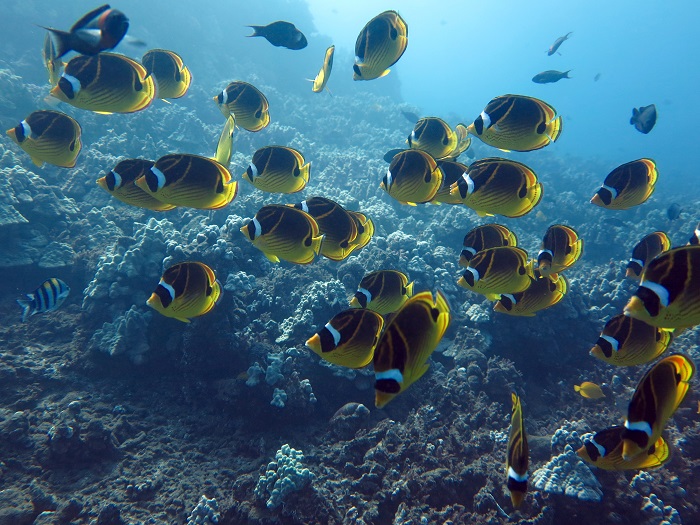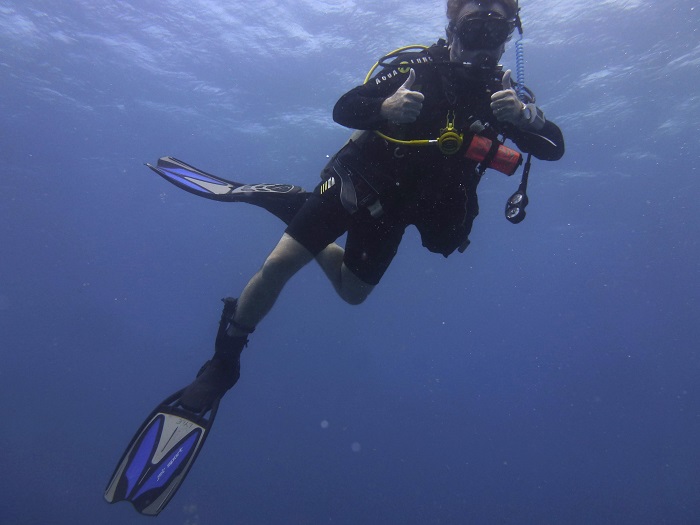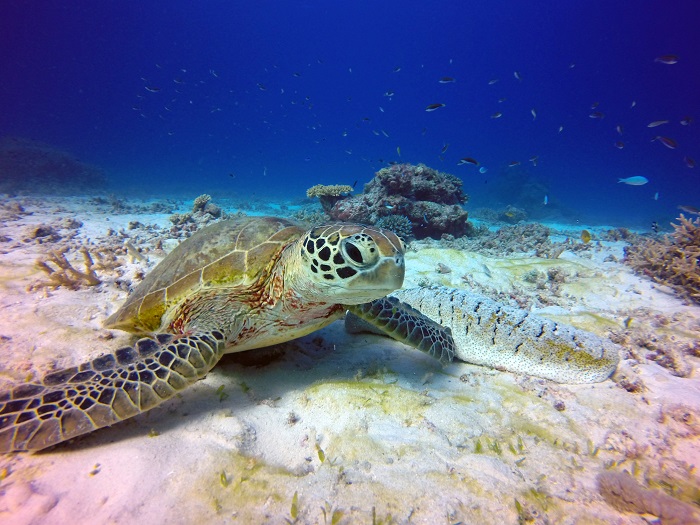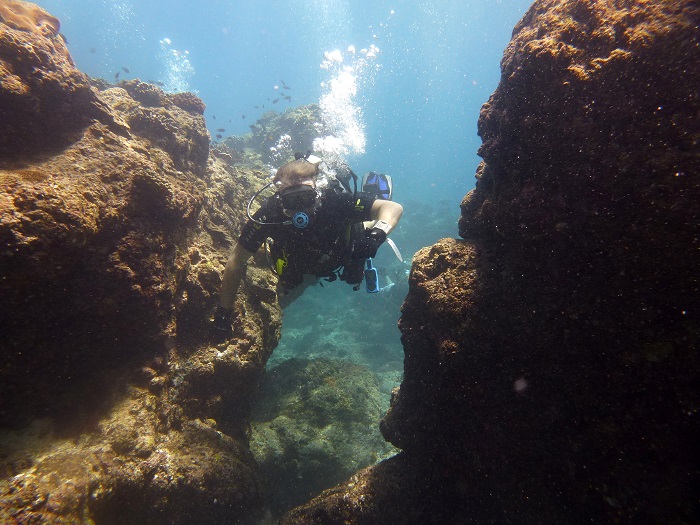It’s not often that you encounter an area that offers a multitude of different underwater conditions and environments that can perfectly suit any diver’s needs – underwater conditions that cater to those who like warmer waters or cooler waters, cave dives or reef dives, drift dives or static water dives. Much of this underwater domain is hidden from the rest of the world, preserved and sheltered, and much of it is still yet to be explored. It’s spread across numerous bodies of water, including The Persian Gulf, The Red Sea, The Indian Ocean and The Gulf of Oman. This area is the Middle East.
Although this variation and diversity offers fantastic and unique diving experiences, it also requires the correct equipment that can make the experience more enjoyable and a lot safer. Although the essentials to Scuba Diving are obvious (Mask, Regulator, BCD, Tank and fins), the Middle Eastern waters are unique, and have their own characteristics that require careful consideration. Within the waters of the Middle East, there is much to be enjoyed — from large and exciting marine life, to mysterious crystal clear caves, and by having the right equipment, the enjoyment of the experience will be enriched and enhanced. Similarly, like all dive locations, there are hazards that are scattered throughout these waters, which range from devious discarded fishing nets, to strong and deceptive currents, that are capable of separating divers from their groups, and groups from their dive boats. But all such problems have solutions, and a few of those are outlined here.

As every resident of a Middle Eastern country is fully aware of, the area gets its fair share of sunlight and humidity, often seeing the air temperature peak above 50°c. Although the sea doesn’t share the exact same temperatures as the air, the temperature of the water (nearer to the surface) can reach over 36°c in some parts of the Persian Gulf. To put that into perspective, the average recommended shower temperature is between 41°c and 48°c, making the surface of the water just a few degrees lower than the average shower temperature. With that, in the summer months, the ideal exposure suit to use would be a short wetsuit, with 2mm thickness, although the temperatures within the first few metres of the surface of the water may be topping 30°c, as you descend below, the temperatures alter greatly. It may be tempting to just wear swimming shorts and a rash guard instead of a wetsuit, but people often can misjudge what the temperature will be like deeper below the water, and assess their exposure suit of choice only on surface temperature. As well, a wetsuit protects a diver from potential cuts or scrapes from corals, the unlikely event of a jellyfish sting or brushes against a sharp sunken object, which are especially important if you’re diving in one of the many shipwrecks scattered throughout the Arabian seas, making a wetsuit the better choice. Alternatively, in the winter months, both the air and water temperatures in the region drop quite dramatically, and the water specifically, tends to hang around the 19 – 21°c mark. With that in mind, a long 3-4mm wetsuit would be the better choice, making you comfortable both on the surface and underwater.

As mentioned, the strength of currents can vary in certain areas throughout the Middle Eastern seas and because of that, you want to be prepared. There are a number of precautions you can take in the event of strong currents that guarantee a safe dive. The first thing is to do is to ensure that you have a durable and strong pair of fins, with no rips or tears and with strong clips and clasps (if the fins are the kind that strap onto booties). Although it may sound peculiar, make sure the fins are made for diving. Too often I have seen amateur divers, 25 metres underwater with the type of swimming fins on that are used to teach children and toddlers to swim in paddling pools. Although a difference between the two types may not seem obvious, when a strong current moves in whilst you’re submerged below the water with 30kg of equipment on your back and you have a pair of paddling fins on your feet, the difference will be made very clear, very fast. Keep in mind that strong currents aren’t always a bad thing, as they can make for a tranquil and relaxing drift dive, where no actual swimming is required and you just act as a passenger to the flow of water and take in the surroundings (my favourite type of dive).

As an extra precautionary measure, an emergency surface marker buoy would be a good investment. It’s simply an orange rolled up tube that can be inflated and sent to the surface in the event of you being separated from your group or vessel that will alert them to your position. It easily fits into your BCD (Buoyancy Control Devise – the “jacket” that the tank is strapped to) pocket, is easy to use and when the time comes, it is incredibly effective. More commonly, the emergency surface marker buoy is used outside of emergencies, when divers simply want to tell their boat where they are so they can be picked up once they have surfaced (instead of a long strenuous swim).
Another common hazard that haunts the Arabian seas is the plethora of discarded fishing nets. After oil, fish are the most valuable resource that the region exports. In 2014, Oman’s volume of catch topped over 200,000 tons, which means a lot fishing nets would have been put to use. Unfortunately, it is a frequent occurrence that some of these nets are discarded onto to reefs or suspended in the water, either purposefully or accidentally. Such occurrences have devastating consequences. These nets can trap coral, marine species and even the occasional diver. This is why a dive knife is another Middle Eastern sea essential. A discarded net can be one of the greatest dangers to a diver, causing panic, entanglement, or sometimes even worse. That’s why having a small dive knife strapped to the outside of your leg or hooked onto your BCD with a sharp blade and quick release is of paramount importance. It increases your chances of being able to disentangle yourself exponentially, or even disentangle a fellow diver.

Although not a hazard, the green water colour that frequents the seas in the area (Dubai especially), is a major obstacle to any photography aficionados. This green tint can often spoil the colours of the different corals and landscapes underwater, and make it very hard to capture the vibrancy that is so unique to the area. For the many underwater cameras that don’t offer the setting to adjust the hue and saturation (GoPros especially), a magenta camera filter works wonders on the colour, and is a sure fire way around this obstacle. It’s a small screen that fits onto the outside of the case on top of the lens and adds the colours that are missing and removes that fluorescent green that is so abundant. This green water colour is more frequent closer to the coast and at shallower depths, but further and deeper out, this green turns to blue – a magnificent blue in areas like the offshore reefs in the Red Sea or the northern side of Musandam. This too however can work against your photos and the blue can replace the other colours that the reefs and landscapes are showing off. The solution to this is a red filter. Similar to the magenta filter, but a darker shade, this works in the same way, and improves the quality and colour of photos dramatically.

The hazards and obstacles outlined here are important and are not to be ignored. However, after measures are taken for preparation and prevention, the risks that these hazards pose are minimised, leaving only one more box to tick – enjoy the dive. Diving in the Middle East is truly a unique experience, and it offers many things that the rest of the world does not. And while there are certain hazards in these waters, they are greatly outweighed by the overabundance of beauty and excitement below the surface. From beautiful corals to giant whale sharks, the diving in the Middle East is awe-inspiring, so get out there and dive, just equip yourself properly to do so.
Words+ Photos By: Jake Lyle

